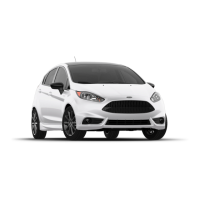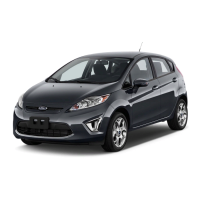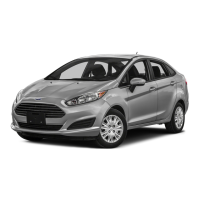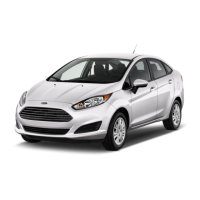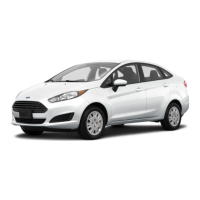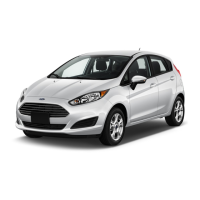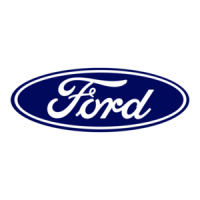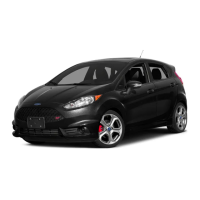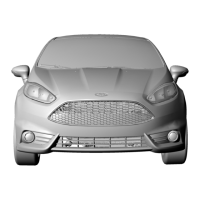Why does my Ford Fiesta 2010 display 'CD DRIVE HIGH TEMP'?
- SSergio WilliamsAug 7, 2025
The unit will not work until it has cooled down. This is likely due to the ambient temperature being too hot.
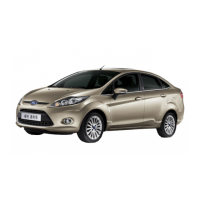
Why does my Ford Fiesta 2010 display 'CD DRIVE HIGH TEMP'?
The unit will not work until it has cooled down. This is likely due to the ambient temperature being too hot.
What to do if my Ford Fiesta 2010 shows 'IPOD ERROR READING DEVICE'?
First, ensure your iPod is correctly inserted. If the error persists, it is recommended to contact your dealer for further assistance.
How to fix 'PLEASE CHECK CD' error on Ford Fiesta 2010?
Ensure the disc is loaded with the correct side up. Try cleaning the disc and re-inserting it, or test with a music disc that is known to work. If the 'PLEASE CHECK CD' error continues, contact your dealer.
| Brand | Ford |
|---|---|
| Model | Fiesta 2010 |
| Category | Automobile |
| Language | English |
Guidance on how to use the owner's handbook for optimal safety and driving pleasure.
Explanation of warning and caution symbols used within the handbook.
Information on identifying Ford Original Parts and their importance for vehicle repair.
Identification and basic function of controls on the instrument panel for left and right-hand drive.
Instructions for unlocking and locking the vehicle using the key or remote control.
Procedures for starting the engine using the keyless system.
Guidelines for selecting and fitting child seats, including mass groups and safety warnings.
Information on ISOFIX system components and attaching child seats with top tethers.
Details on driver, front passenger, knee, side, and curtain airbags and their deployment.
Guidelines for proper seat belt usage, including pregnancy and reminder systems.
Instructions for programming remote controls and changing their batteries.
Steps for locking and unlocking doors using the key, remote, and keyless entry.
General information and operation of the keyless entry and passive key system.
Principle of operation, coded keys, arming, and disarming the immobiliser.
Operation, triggering, arming, and disarming the vehicle's alarm system.
Instructions for adjusting the steering wheel position and locking mechanism.
Operation of steering wheel mounted audio and seek controls.
Operation of windscreen wipers, including automatic and intermittent modes.
Adjusting washer jets, checking, and changing wiper blades.
Operation of lighting controls, main/dipped beams, and parking lamps.
Instructions for removing and changing various vehicle bulbs.
Operation of electric windows, anti-trap function, and safety switch.
Adjustment and operation of manual and electric exterior mirrors.
Identification of instrument cluster gauges like tachometer and speedometer.
Explanation of various warning lamps and indicators on the instrument panel.
Overview of the information display and device list for audio functions.
Details on trip computer displays like distance to empty and average speed.
Explanation of climate control system operation and air vent functions.
Instructions for operating manual and automatic climate control systems.
Guidance on achieving the correct driving position for safety and comfort.
Procedures for adjusting head restraints and manual seat controls.
Operation and features of sun visors, clock, cup holders, and cigar lighter.
Details on storage compartments, map pockets, AUX input, and USB port usage.
Instructions for using the ignition switch and keyless starting system.
Procedures for starting petrol and diesel engines, including DPF information.
Essential safety measures and guidelines for fuel quality (petrol and diesel).
Operation of the fuel filler flap and information on the catalytic converter.
Instructions for operating manual and automatic transmissions.
Explanation of brake system operation, including ABS functionality.
Instructions for applying and releasing the parking brake.
Explanation of the Electronic Stability Programme (ESP) and its usage.
How the parking aid system works and how to use it.
Instructions for activating, deactivating, and using the rear view camera.
How cruise control works and how to use its functions.
Guidelines for securing luggage and using luggage covers.
Information on fitting and using roof racks and load carriers.
Procedures and warnings for towing a trailer and using a detachable tow ball.
Recommendations for running-in new tyres, brakes, clutch, and engine.
Guidelines and precautions for driving through water.
Information on the location and purpose of emergency equipment.
Identification of fuse box locations and procedures for changing fuses.
Detailed chart of fuses, their ratings, and protected circuits.
Instructions for towing points and towing the vehicle on four wheels.
Overview of regular maintenance and bonnet opening/closing procedures.
Diagrams identifying key components in the engine compartment.
Procedures for checking engine oil, coolant, washer, and brake fluid levels.
Guidelines for cleaning the vehicle's exterior and interior surfaces.
Recommendations for preserving paintwork and repairing minor scratches.
Step-by-step instructions for jump-starting a vehicle using booster cables.
Identification of positive and negative battery terminals and connection points.
Tyre sizes, pressure, wheel changing procedures, and jack usage.
Using the tyre repair kit, tyre care, and fitting winter tyres/snow chains.
Table of tyre pressures for various loads and speeds.
Information on locating and understanding vehicle identification plates and VIN.
Key dimensions of the 3-door, 5-door, and van models.
Dimensions related to towing equipment for different vehicle variants.
Notes on audio disc compatibility and labels, including warnings.
Diagrams identifying controls for different audio unit types.
Explanation of the unique security code linked to the vehicle identification number.
Instructions for basic audio unit operations like power, sound adjustment, and tuning.
How to store stations, use autostore, and activate traffic announcements.
Explanation of audio unit menu options like volume, DSP, news, and regional settings.
Procedures for CD playback, track selection, and shuffle/repeat functions.
Guidelines for playing MP3 files, including formats and navigation.
Instructions for connecting and using auxiliary input devices.
Solutions for common error messages related to the audio unit.
Overview of the Bluetooth system and setup requirements.
Procedures for making, receiving, and controlling calls via the system.
Using voice commands for phone operations like dialing and call management.
How voice recognition works and general system operation.
Voice commands for controlling the CD player and radio.
Voice commands for controlling USB and iPod devices.
Overview of connecting external devices via USB and AUX.
Steps for connecting Bluetooth-enabled audio devices.
Operating USB and iPod devices through the audio system.
Important safety warnings and guidelines for using the navigation system.
Initial steps for setting up and activating the navigation system.
Regulatory compliance information, including FCC and Industry Canada notices.
Information on vehicle compliance with electromagnetic compatibility legislation.
